
Copernical Team
Demonstration of data transmission from a microsatellite by laser
 Small satellites are becoming increasingly compact and powerful. The technology of conventional radio channels is reaching its limits due to the rising number of satellites. Laser communications offers solutions for the efficient transmission of high data volumes without interfering with other channels. For this application, the German Aerospace Center Institute of Communications and Navigation,
Small satellites are becoming increasingly compact and powerful. The technology of conventional radio channels is reaching its limits due to the rising number of satellites. Laser communications offers solutions for the efficient transmission of high data volumes without interfering with other channels. For this application, the German Aerospace Center Institute of Communications and Navigation, Private sector actively competing for involvement in China's space station, manned lunar missions
 China's private space enterprises are hopeful that commercial rockets developed by them will be involved in the launch missions of the low-cost cargo transport vehicle for the country's space station, announced a senior official with the China Manned Space Agency (CMSA) at a press conference on Wednesday.
In proposals provided by space enterprises for China's space station low-cost cargo t
China's private space enterprises are hopeful that commercial rockets developed by them will be involved in the launch missions of the low-cost cargo transport vehicle for the country's space station, announced a senior official with the China Manned Space Agency (CMSA) at a press conference on Wednesday.
In proposals provided by space enterprises for China's space station low-cost cargo t USound and Physical Synthesis to send the tiniest speaker to space
 USound, the leading provider of advanced audio solutions from Austria, announced that it has been selected by Physical Synthesis, a US-based hardware startup that builds state-of-the-art musical instruments, for the completion of a challenging space project named "Blue Marble: Put a Musical Synthesizer in Space!". The project entails the design of a zero-gravity synthesizer that will be launched
USound, the leading provider of advanced audio solutions from Austria, announced that it has been selected by Physical Synthesis, a US-based hardware startup that builds state-of-the-art musical instruments, for the completion of a challenging space project named "Blue Marble: Put a Musical Synthesizer in Space!". The project entails the design of a zero-gravity synthesizer that will be launched Groundbreaking method for robotic space assembly inspired by human arm dynamics
 In the ever-evolving landscape of space technology, the role of robots in the assembly and maintenance of spacecraft is growing significantly. As reliance on robotic manipulators increases, the traditional methods of control are proving to be less efficient, particularly in complex assembly processes. In a recently published paper in Cyborg and Bionic Systems, researchers at Beijing Institute of
In the ever-evolving landscape of space technology, the role of robots in the assembly and maintenance of spacecraft is growing significantly. As reliance on robotic manipulators increases, the traditional methods of control are proving to be less efficient, particularly in complex assembly processes. In a recently published paper in Cyborg and Bionic Systems, researchers at Beijing Institute of 3 astronauts return to Earth after 6-month stay on China's space station
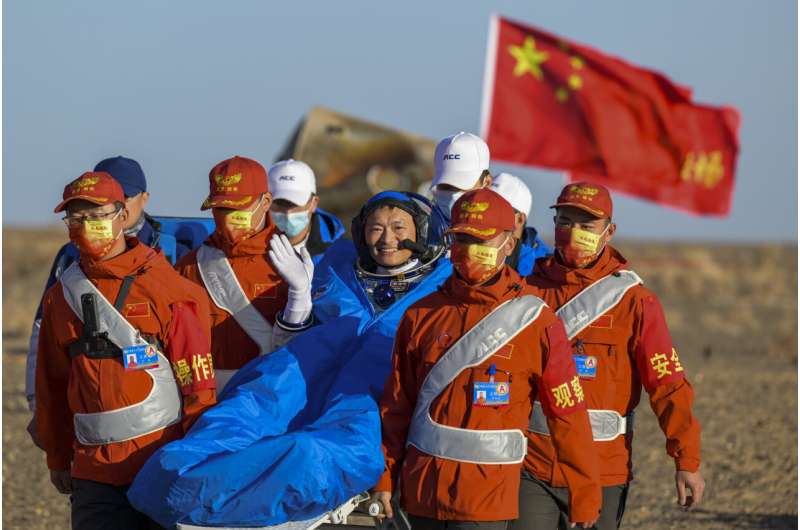
Spooky sights from space: world’s largest acidic lake
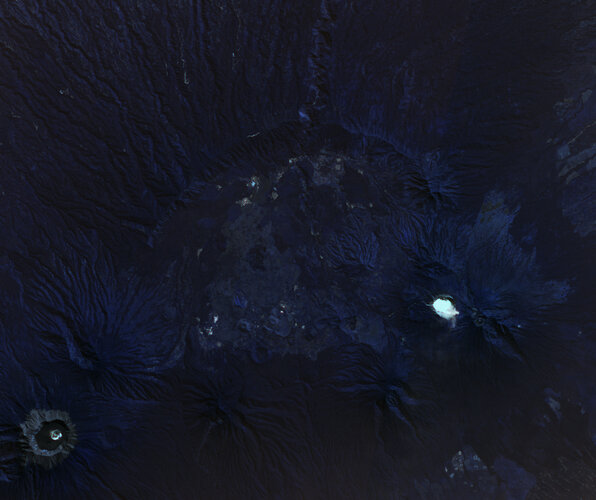 Image:
What’s spookier than the ‘largest acid cauldron on Earth?’ In East Java, Indonesia, lies the Kawah Ijen Crater Lake – the world’s largest acidic lake, a chilling spectacle perfect for Halloween.
Image:
What’s spookier than the ‘largest acid cauldron on Earth?’ In East Java, Indonesia, lies the Kawah Ijen Crater Lake – the world’s largest acidic lake, a chilling spectacle perfect for Halloween. Australian school students are experimenting with 'space veggies' in a NASA initiative
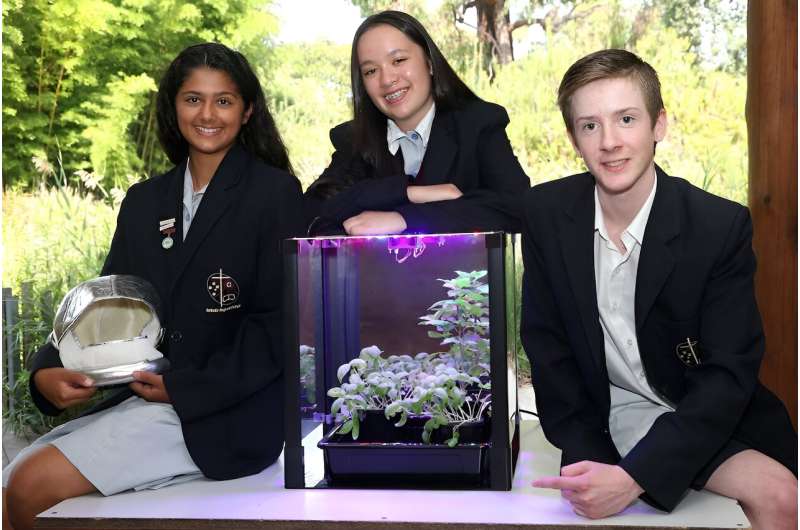
A pink glow is shining on the faces of enthusiastic students as they tend to plants in purpose-built grow boxes for space stations.
These students are the first in Australia to experience Growing Beyond Earth—a schools citizen science program from NASA and Fairchild Tropical Botanic Garden in the United States.
In Australia, Royal Botanic Gardens Victoria is working with the La Trobe Institute for Agriculture and Food, and Melbourne Archdiocese of Catholic Schools. The educational initiative ties into the Australian curriculum and gives students a unique introduction to gardening through science.
In this project, students grow plants in controlled conditions to test if they would be suitable for NASA missions, to help feed a future cadre of astronauts.
Plants evolved on Earth, so they might not grow so well in space.
China set up a tiny farm on the moon in 2019. How did it do?
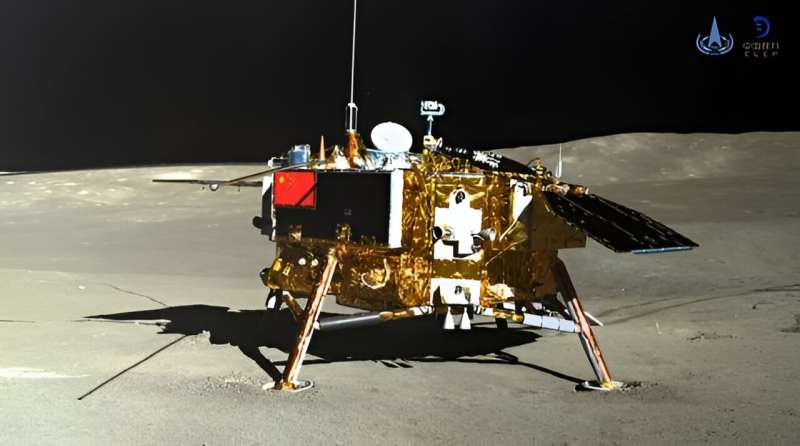
On January 3, 2019, China's Chang'e-4 lander touched down on the far side of the moon and deployed the Yutu rover. In addition to its many instruments, the rover carried an important science experiment known as the Biological Experiment Payload (BEP). Over the next eight days, this payload conducted a vital experiment where it attempted to grow the first plants on the moon. Included in the payload were cotton, potato, arabidopsis, and rape seeds, along with fly eggs, yeast, and 18 ml (0.6 fluid oz) of water, which was kept at a constant atmospheric pressure.
The results of this experiment will help inform future Bioregenerative Life Support System (BLSS), which will prove vital to habitats and missions beyond Low Earth Orbit (LEO). A team of scientists from China recently released a study that reviewed the experiment, its results, and its potential implications for future missions to the moon, Mars, and other deep-space locations.
To advance space colonization, team explores 3D printing in microgravity
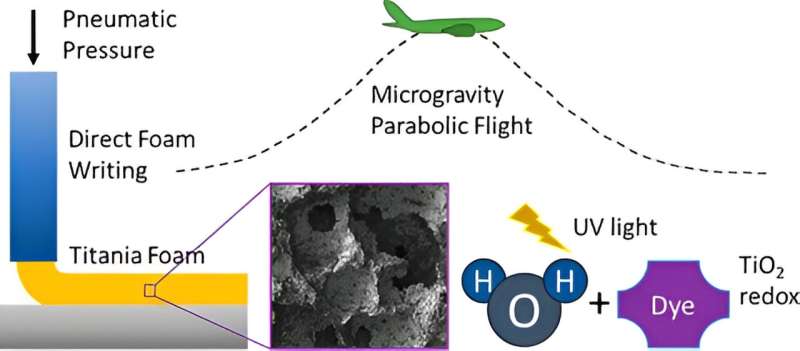
Research from West Virginia University students and faculty into how 3D printing works in a weightless environment aims to support long-term exploration and habitation on spaceships, the moon or Mars.
Extended missions in outer space require the manufacture of crucial materials and equipment onsite, rather than transporting those items from Earth. Members of the Microgravity Research Team said they believe 3D printing is the way to make that happen.
The team's recent experiments focused on how a weightless microgravity environment affects 3D printing using titania foam, a material with potential applications ranging from UV blocking to water purification. ACS Applied Materials and Interfaces published their findings.
"A spacecraft can't carry infinite resources, so you have to maintain and recycle what you have and 3D printing enables that," said lead author Jacob Cordonier, a doctoral student in mechanical and aerospace engineering at the WVU Benjamin M. Statler College of Engineering and Mineral Resources.
ESA space transportation accelerates disruptive innovation with FIRST!
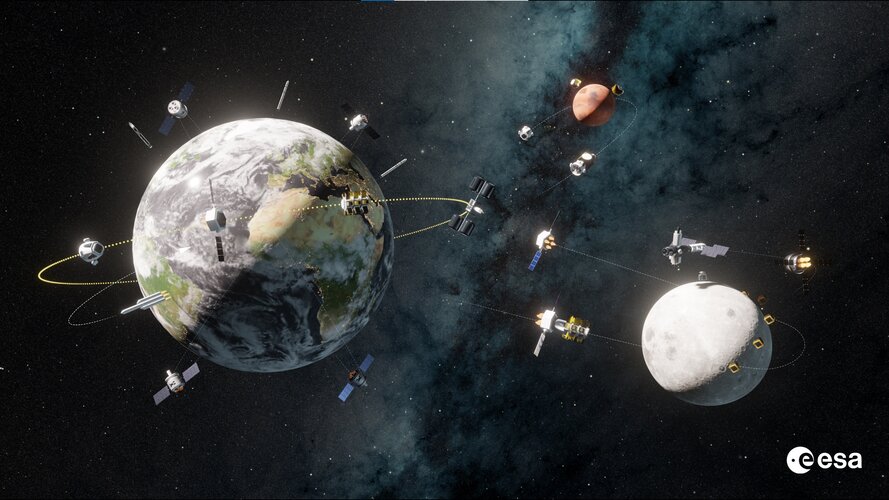
An ESA initiative to speed the development of disruptive space technologies took a step forward this month, when a cohort of European innovators presented concepts which they hope will help Europe build commercially competitive, high-performance space transportation systems.

